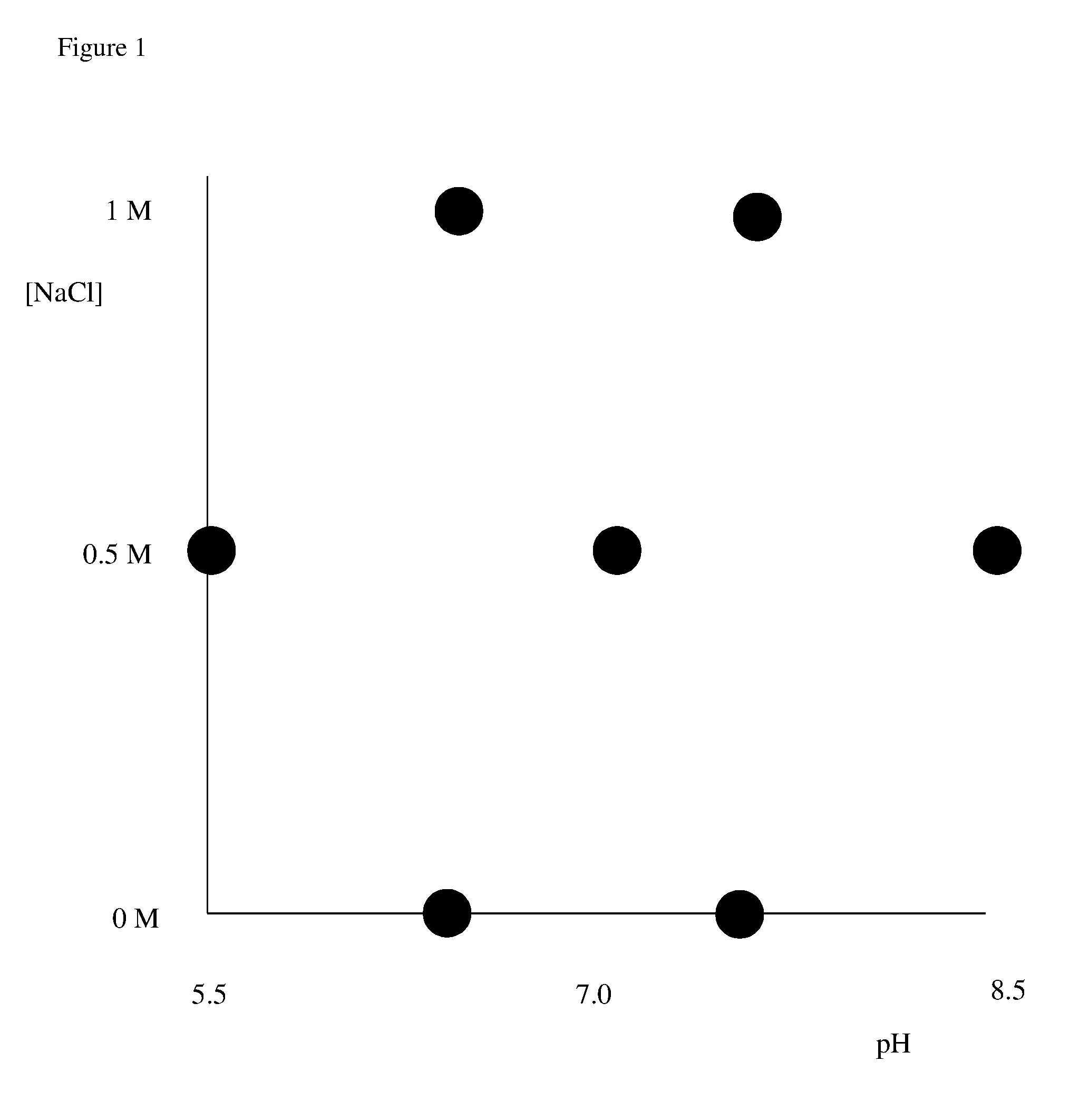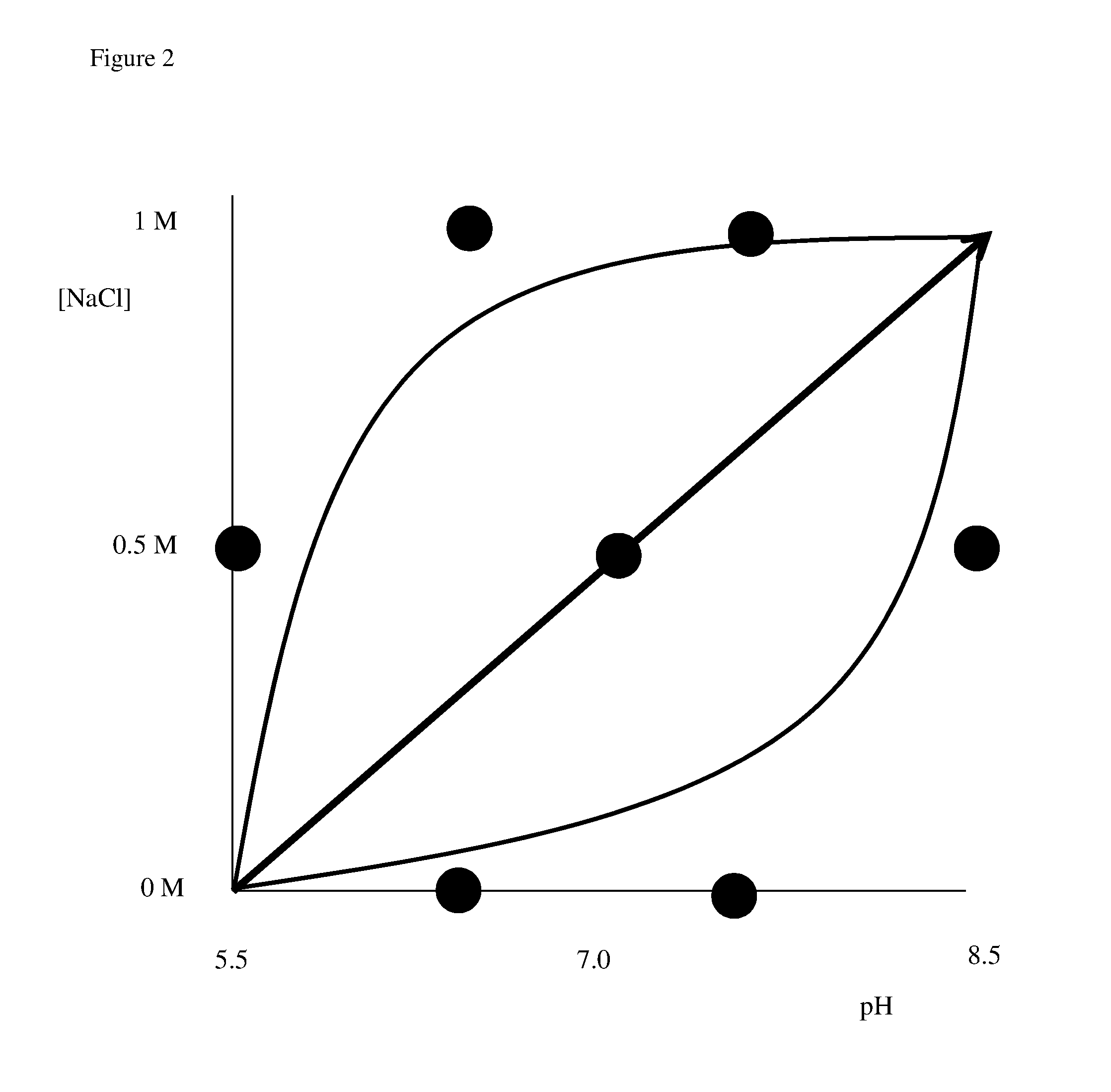Determination of chromatography conditions
a chromatography and condition technology, applied in the field of bioprocessing, can solve the problems of requiring time and resources, affecting the quality of chromatography, and the flow rate may not be totally constant, so as to improve the information content, and reduce the time and effort to transport and maintain buffer containers.
- Summary
- Abstract
- Description
- Claims
- Application Information
AI Technical Summary
Benefits of technology
Problems solved by technology
Method used
Image
Examples
example 2
Determination of Conditions According to the Invention
[0065]This example uses a simultaneous pH and salt gradient. Three runs (concave, convex and straight) are performed, as illustrated in FIG. 2. The curvature of the gradients is designed so that all the points in the DoE are close to the path of the gradients. In the case of the curved gradients three elution fractions are collected, one for each of the DoE points passed by. In the case of the straight gradient one fraction is collected in the middle of the gradient requiring a total of 7 analyses of purity and yield. The responses are used to train the DoE regression model which then is used to predict the optimal isocratic conditions. Alternatively a qualitative assessment of the elution map may be used to obtain the most suitable conditions.
PUM
| Property | Measurement | Unit |
|---|---|---|
| pH | aaaaa | aaaaa |
| conductivity | aaaaa | aaaaa |
| acid | aaaaa | aaaaa |
Abstract
Description
Claims
Application Information
 Login to View More
Login to View More - R&D
- Intellectual Property
- Life Sciences
- Materials
- Tech Scout
- Unparalleled Data Quality
- Higher Quality Content
- 60% Fewer Hallucinations
Browse by: Latest US Patents, China's latest patents, Technical Efficacy Thesaurus, Application Domain, Technology Topic, Popular Technical Reports.
© 2025 PatSnap. All rights reserved.Legal|Privacy policy|Modern Slavery Act Transparency Statement|Sitemap|About US| Contact US: help@patsnap.com



